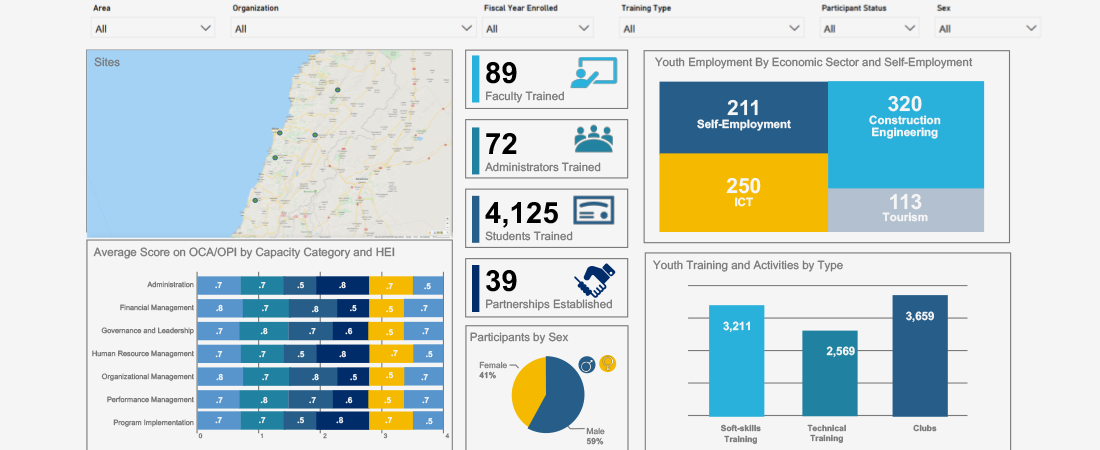Insights to Impact

Every international development project wants to have a big impact. But how do you tell just how significant a difference a project is making? It’s all about the data, says EDC’s Munir Mahomar.
“Country projects and field offices need to collect and report data. But even within a project, partners often collect their own data with their own systems,” he says. “It’s difficult to pull all that data together to see just how much impact a project is having.”
An evaluation specialist himself, Mahomar was convinced that development professionals could do better, more efficient work if they had a tool that streamlined data collection and analysis. So he created one. The result is M&E Insight, a new open source monitoring and evaluation data management system designed for international development projects that often do the hard work of on-the-ground data collection.
M&E Insight offers data professionals a set of database templates that can help them manage and organize data in education, health, and workforce development projects. It was built on the ASP.NET open source Web framework and is available as open source for free through GitHub, the popular software development platform.
What sets M&E Insight apart, says Mahomar, is its robust data collection capabilities. Data can be entered via a Web interface, allowing field-based staff to collect and enter data remotely—thus doing away with time-consuming data collection via paper surveys.
The tool also integrates easily with external data visualization tools, allowing users to create online dashboards that pull data into an array of charts, graphs, and data points. This enables project staff and funders to see impact in real time.
The idea for the data management system came from Mahomar’s own experiences of collecting and managing data on international development programs. He learned that development initiatives often share common elements and challenges regarding data management, and that leveraging those similarities could be a game changer.
“That’s why we designed M&E Insight to meet the Common Education Data Standards (CEDS),” he says. “Our adherence to the standards provides a common data vocabulary for every project, including a common set of data elements that can be improved, reused, and replicated for any project.”
Willard Mutoka is the database manager for EDC’s USAID-funded Let’s Read program in Zambia—one of several EDC projects already using M&E Insight. He says that the data management system has made data collection and analysis more transparent.
“What I like most is the dashboards,” says Mutoka. “We have certain indicators that we need to report on, and [with the dashboard] people can see what data has come in.”
Currently, Mutoka is collecting enrollment and demographic data on schools that will be participating in Let’s Read. But in a few months, he will begin training teachers and other stakeholders to use M&E Insight to view statistical data on schools and reading intervention programs, to submit and view data from student reading assessments, and to track the distribution of learning and teaching materials.
Teachers, then, won’t just be implementing the literacy interventions of Let’s Read. They will be essential data collectors, too, helping EDC and USAID visualize the impact that the program is having.
“We are really interested in seeing how the data collection unfolds,” Mutoka says.